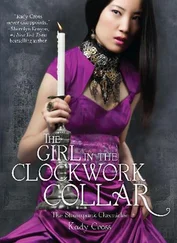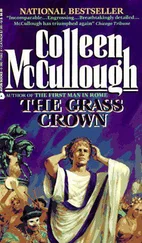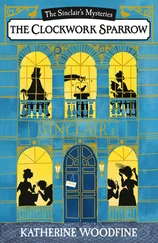“You were brilliant. I—you moved so fast! And you’re strong. Really strong.”
I was a little stunned by her words and admiration, and it took me a moment to respond as I patted my hair back into place and picked up my cloak. “I’m a Venator. It’s what I’m called to do. To be.”
“And your gown! It’s all beyond cleverness to have split skirts—you have such freedom of movement. I shall have to have some of my own made if these sorts of events are going to occur regularly.”
“Thank you,” I said, choosing not to point out that she could hardly expect to be as accomplished a fighter as I was.
“What I find difficult to comprehend is how you can inflict such pain and violence so easily and yet become ill at the very sight of blood.”
My smile faded. “Right. Well, it’s quite simple. Vampires don’t bleed.”
Or so I’d heard.
Miss Holmes
An Introduction to a Secret Society
Filled with admiration for the way Miss Stoker had flown into action so competently and gracefully, I confess I was a bit distracted as we hurried along the tunnel after our quarry.
That doesn’t mean I neglected to take note of the environment: the remnants of old shops in the alcoves, the evidence of human presence and of the nonhuman creatures that existed below the streets. Because of my dislike of dark, deep places, I’d never ventured into the infamous London sewers, where the tosher men lived and dredged up anything of value from the sludgy waste.
We’d lost our group by sight, but we were able to hear them and use the sound as guidance. It led us to a bright tunnel perpendicular to the railroad tracks, and off that tunnel was a room. Its door was open.
Miss Stoker and I approached the chamber, but seemed to draw no attention, for the rest of the young women were standing about talking in small groups.
The place could have been a parlor inside any well-appointed home during an afternoon tea party or musicale. It was lit by numerous electric lights, which gave off a cleaner, whiter light than gas lamps, but had been made illegal by the Moseley-Haft Act. The room was comfortable in temperature without the lingering dampness that pervades underground spaces, and was furnished with rows of upholstered chairs. Rich, heavy fabrics had been draped on the walls, and a small table of refreshments held lemonade, tea, and a generous assortment of biscuits. An odd scent lingered in the air, and I sniffed. Sweet and pungent, with an underlying note of muskiness.
At the front of the chamber stood an imposing statue of Sekhmet. The representation of the half-lion, half-woman stood a head taller than a man. Her regal body was shiny gold, and her leonine snout was rounded and feminine, yet fierce. Despite the fact that Sekhmet was a goddess, she was shown with a male lion’s long, smooth mane. As was common in the depiction of any immortal, she had a disk atop her head. This represented her deism in relation to Ra, the sun god. A cobra in mid-lunge curled out from the circle.
Sekhmet’s dark eyes captured my attention. Despite the fact they were carved from whatever medium the statue was cast (I couldn’t tell for certain if it was gold or merely painted to look that way), those orbs were clear, shiny, and seemed alive.
I suspected this was the same Sekhmet statue that had somehow caused Mr. Dylan Ekhert’s mysterious journey.
I turned to the group of young women. Their hoods had become slack, and I could see the faces of many of them. Counting fifteen in the room, I recognized some as familiar, but I knew none of their names. I judged them all to be between sixteen and eighteen years. Each was well dressed, with fancy coiffures and jewelry, and I glimpsed fine fabrics beneath the cloaks, confirming my deduction that they were all attendees of the Cosgrove-Pitt ball. They talked and laughed among themselves, and energy and excitement filled the air. My sharp eyes found no sign of the shadowy figure who’d carried the lantern and led us all to this place.
A delicate chime sounded from near the front of the chamber, and the occupants appeared to take that as a signal to find a seat. Just as Miss Stoker and I slipped into chairs in the last row, a door hidden by one of the wall hangings near the statue opened and the room fell silent. The only sound was from a young woman in front of me. If the noisy masticating coming from the vicinity of her jaw was any indication, she was enjoying a very crunchy biscuit.
In walked two women carrying torches, garbed in long, shimmering golden tunics. Around their necks, covering their shoulders and upper torsos, were the large, circular Egyptian usekh—the iconic gold collars worn by pharaohs. Both women wore heavy black eyeliner that extended beyond the outside corner of each eye and ended in a little circular flourish, as well as blue-shaded coloring on their eyelids. Their dark red lips, pale cheeks, and black hair pulled back into sleek chignons made them appear identical—although observation confirmed that they were not.
The pair walked toward the statue of Sekhmet, each placing a fiery torch in a sconce on either side of it. It was an odd sight: the ancient statuary from Egypt flanked by primitive flaming torches in a modern chamber illuminated by artificial light.
“Welcome to the Society of Sekhmet,” said one of the women as they turned to face the group.
“The Ankh is pleased that you have accepted its special invitation,” said the other.
Mirror images of each other, they continued to speak in turn, using low, modulated voices. They weren’t automatons, but they gave off the impression of being two halves of one whole. I suspected one of them had been the lantern carrier and the second woman had been the owner of the white glove that collected our invitations.
“Now, it is our honor to welcome . . .”
“. . . the Most Reverent Ankh.”
A hushed rumble filtered over the group. Then it became still and silent, holding its collective breath.
When the two women deemed the small crowd to be properly reverent, they walked back to where they’d entered. One held the fabric covering aside, and the other opened the door. Anticipation crackled through the chamber as a tall, slender figure stepped into view.
At first I thought it was a man, for the individual was dressed in the masculine attire of a black stovepipe hat made popular by the American president Lincoln, along with a well-tailored black frock coat, trousers, and gleaming black shoes. Beneath the coat was a crimson shirtwaist and a waistcoat of black and red paisley. Black gloves, a black neckcloth, and a black walking stick topped by an ornate gold head completed the ensemble.
But as the Ankh walked toward Sekhmet, I became uncertain of his or her gender. The movements were easy and graceful, the facial features and hair were obscured by the hat brim’s shadow. From my distant seat, I made out smooth, fair skin, a well-defined jaw, and a long, slender nose. The mouth was full, and the cheeks high, and I revised my opinion toward that of the feminine race. As I scrutinized the individual, I had a niggling feeling I was missing something important.
“Good evening.” The Ankh’s voice gave no further confirmation or denial of gender. It was smooth, hardly above a whisper, and somewhere in the range of a tenor. Despite its low volume, every syllable reached all corners of the chamber. “I am pleased to be with you at last, dear ladies of the Society of Sekhmet.”
Another rustle filtered through the room. It has been my experience that young ladies can never sit still for long, particularly while dressed in corsets and heavy, clinging skirts.
“In the past, some of you attended our salon meetings dedicated to the study of Sekhmet and other fascinating aspects of Egyptology. And some of you have accepted the invitation to join us for the first time this evening. Please accept my apology that tonight’s discussion will not be about the meaning of the uraeus, as you might have anticipated. Shall we save that for a more conventional meeting during the daylight hours?”
Читать дальше










